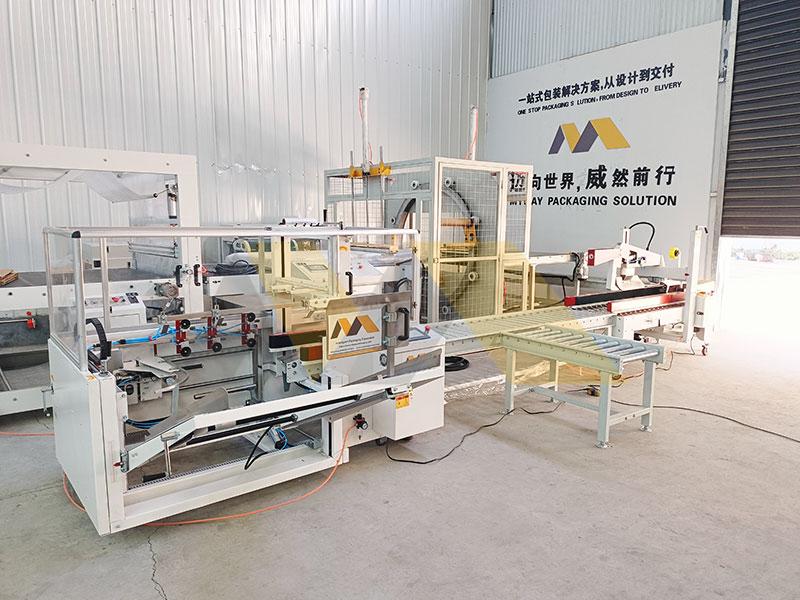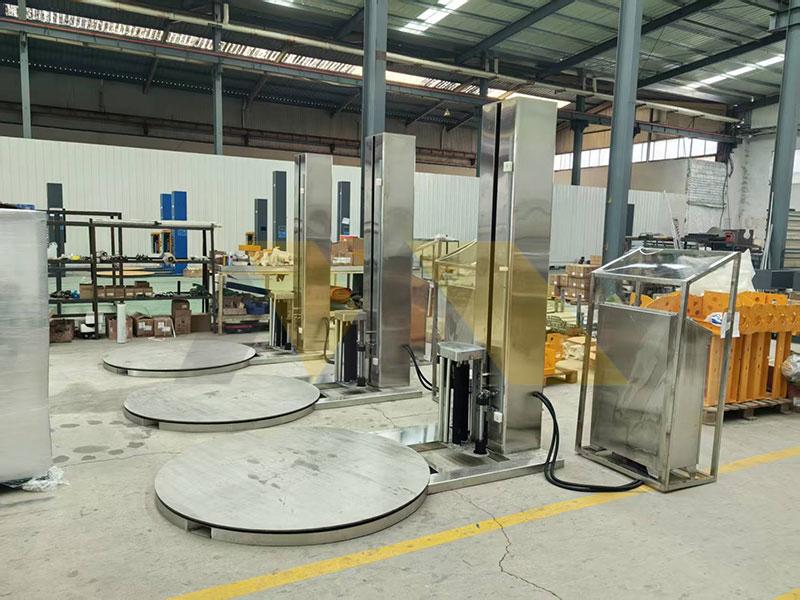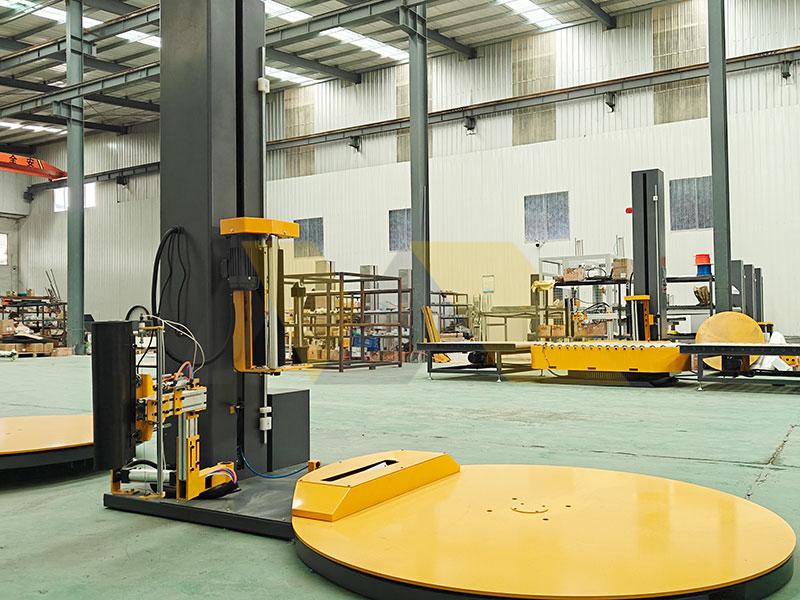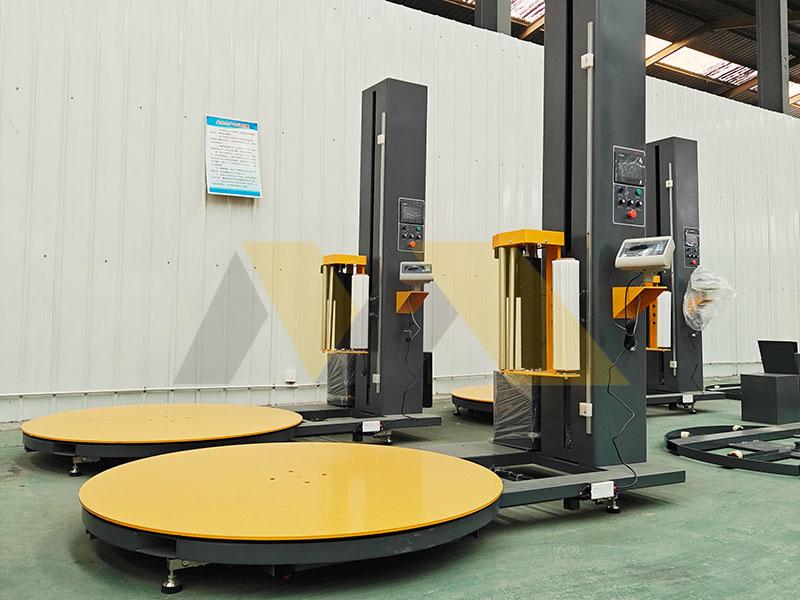Loads collapsing in transit? Unstable pallets destroy products. Proper wrapping technology prevents these costly disasters.
Wrap machines stabilize pallets using tension-controlled stretch film or heat-activated shrink film applied through rotating arms or conveyor tunnels – critical equipment that reduces damage claims by 65% on average for export shipments.
I witnessed this in Singapore last year when a client switched to proper systems – his cargo claims dropped from $27,000 to under $3,000 monthly. Learn the life cycle protection approaches.
What are stretch wrapping machines?
Film tension failures causing load shifts? Manual wrapping wastes labor. Purpose-designed automation solves both issues forever.
Stretch wrapping machines rotate pallets while dispensing tension-controlled plastic film, securing loads with 250-300% elongation uniformity. Their turntable and arm designs replace 3-4 workers while guaranteeing shipment stability.
Engineering Precision Behind Secure Loads
After Lambert’s Vancouver-bound pallets collapsed twice, we identified core failure points through failure analysis:
-
Critical Specifications Table: Entry-Level Units Professional Systems Export-Grade Models Max Pallet Height 1.8m 2.4m 3.1m Film Pre-Stretch 180% 250% 320% Load Sensors Basic Weight-detection Humidity-adjusting ROI Period 14 months 8 months 5 months
Core implementation factors:
-
Torque Calibration
Montreal docks require 20% less tension than Singapore ports due to temperature
Pro tip: Always test with 30% off-center loads before purchasing -
Environmental Resistance
Japanese buyers need salt-spray tested rollers for coastal factories
Arctic shipments require pre-heat cycles to prevent film brittleness
Last shipment season, our auto-diagnosis systems saved Lambert 47 hours of downtime. Evaluate your conditions: Get engineering consultation
How to shrink wrap a pallet?
Heat-shrink failures exposing products? Inconsistent application invites moisture damage. Systematic processes guarantee protection.
Proper pallet shrink wrapping involves wrapping goods, applying heat tunnel temperatures of 130-190°C, and allowing 90-second cooling cycles. This creates tamper-proof seals with zero structural gaps.
Scientific Approach for Ironclad Protection
Working with Montreal pharma distributors revealed these mission-critical steps:
-
Heat Zone Optimization
- Lower zone: 150°C for even base contraction
- Middle zone: 170°C for side fusion
- Upper zone: 160°C to avoid melting
-
Film Selection Matrix Material Thickness Products Suited Shrink Temp PVC 120-150μm Electronics 135-160°C Polyolefin 70-100μm Foods 155-175°C Cross-Linked 45-80μm High-value goods 175-190°C
Why Lambert switched:
- UV Resistance: Singapore sea transit demands UV-blocking layers
- Moisture Testing: We simulate monsoons using 95% humidity chambers
- Seal Integrity: Our pressure sensors detect 0.5mm gaps
Automated tunnel settings slash errors 92% versus manual sealing wands. Solve your unique challenges: Technical support
What should I know about shrink wrap?
Shrink wrap tearing mid-shipment? Film failures cause 78% of product damages. Material science prevents these disasters.
Select shrink wrap based on thickness (microns), shrink ratio (30-80%), and polymer type. Sea exports require UV inhibitors and ≥65μm thickness – verify fire retardant certifications like CE/RoHS.
Film Engineering Insights for Buyers
After testing 120+ film variants, our Singapore lab found:
-
Durability Reality Chart Thickness Humidity Failure Rate Max Load Height Sea Transit Suitability 50μm 38% @ 85% RH 1.5m Poor 65μm 15% @ 90% RH 2.1m Moderate 80μm 5% @ 95% RH 2.7m Excellent 100μm <2% @ 100% RH 3.3m Extreme
Critical buyer advice:
-
Material Certifications
- UL recognized for US/Canada
- CCC for China-bound shipments
Lambert avoided $15K in fines by demanding documentation
-
Static Control
Electronics require ESD-safe film with < 10^9 ohms resistivity
Cold-chain films need flexible additives – our Osaka client cut tears 68% switching to cold-resistant variants. Always request technical data sheets.
What are the benefits of pallet wrappers?
Hidden transport costs destroying profits? Manual stabilization drains resources. Automation transforms logistics economicsPallet wrappers reduce labor costs 70%, cut film usage 25-40%, and eliminate 58% of shipping damages. Their ROI manifests in under 9 months through protection and efficiency gains.
ROI Breakdown from Real-World Implementations
Data from Lambert’s Toronto operation shows transformative impact:
-
Direct Savings Comparison: Manual Wrapping Semi-Auto Systems Full Automation Labor Hours/Day 15 5 1.5 Film Waste 35% 18% 8% Damage Claims Value $28K/month $7K/month $1.2K/month
Strategic insights:
-
Preventative Advantages
- Earthquake stabilization: Japanese models absorb 150% more vibration
- Humidity compensation: Singapore models auto-adjust tension
-
Revenue Multipliers
- Faster loading docks: 28 more pallets/hour throughput
- Brand protection: Tamper-proof wrapping builds client trust
Our IoT-enabled units predict maintenance needs – Lambert avoided $9K repair costs last quarter. Optimize your workflow: Request ROI calculation
Conclusion
Proper wrapping technology eliminates shipping damages and transforms logistics economics – partner with experts for maximum protection.




